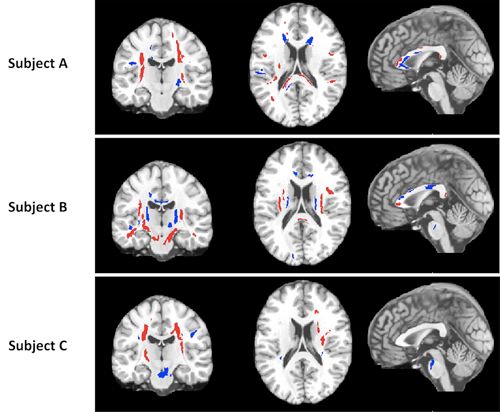Imaging Technique Shows Brain Can Heal After Injury
CHICAGO - The brain’s ability to compensate for a traumatic injury could result in a new treatment approach, encouraging the brain to heal itself.
CHICAGO - The brain’s ability to compensate for a traumatic injury could result in a new approach to treatment, according to researchers at RSNA 2012. Rather than attempting to reverse damage to the brain, doctors may one day be able to encourage the brain to heal itself.
Michael Lipton, MD, associate director of the Gruss Magnetic Resonance Research Center at the Albert Einstein College of Medicine, revealed Monday the results of his research on mild traumatic brain injuries (MTBI). By using a technique called diffusion tensor imaging (DTI), Lipton and other researchers were able to analyze the uniform flow of water in the brain.
This flow of water molecules is called fractional anisotropy, (FA) and its presence in the brain is no surprise. The fact that brain injuries can lead to lower FA has been known for years, and Lipton and his team expected to find it in their study. But they also found something they didn’t expect: areas in the brain that were almost “too normal.” In other words, some patients had parts of the brain with abnormally high FA. These patients experienced fewer post-concussion symptoms and higher cognitive functioning.
Rather than serving as evidence of damage, the development of unusually high FA in areas of the brain may be a sign of neuroplasticity, one of the ways that people are able to recover from a brain injury.
“We’re not talking about new nerves regenerating, but we’re talking about existing nerves connecting and interacting with each other,” Lipton said.
Treating brain injuries isn’t an exact science. According to the CDC, 1.7 million Americans sustain an MTBI each year, and Lipton said that most of them don’t suffer from any long-term effects. However, a sizeable minority (about 30 percent) will experience post-concussion symptoms that may last months or even years. Even the size of the brain injury isn’t a good indicator, according to Lipton.
“Size really doesn’t necessarily matter when you’re talking about brain injuries,” he said. “Saying, ‘Oh, it’s just a small little thing,’ doesn’t necessarily mean that the consequence for function is going to be small.”
As a result, identifying which patients are at risk has proved difficult. Lipton says that DTI and other imaging techniques could help doctors predict the long-term outcome of an MTBI, but stressed that the real breakthrough is what that could mean for treatment. He added that the concept of enhancing the brain’s ability to compensate for injuries is “not very much on the radar” in terms of current techniques.
“I think the most interesting thing about our finding, though, is that it really opens the window to a new idea, a new approach, in terms of therapy,” Lipton said. “There’s a possibility for us to use this… to identify therapies that don’t look at, how do we fix the damage, but look at how do we enhance the brain’s ability to compensate for that effect.”

Areas of abnormal fractional anisotropy (FA) are shown in three mild traumatic brain injury (MTBI) patients two weeks post-injury. Red indicates areas with abnormally low FA, consistent with axonal injury due to traumatic brain injury (TBI). Blue indicates regions with abnormally high FA, which may represent a compensatory response. Note the difference in spatial distribution of abnormality between the three subjects. Image courtesy RSNA.
Emerging AI Algorithm Shows Promise for Abbreviated Breast MRI in Multicenter Study
April 25th 2025An artificial intelligence algorithm for dynamic contrast-enhanced breast MRI offered a 93.9 percent AUC for breast cancer detection, and a 92.3 percent sensitivity in BI-RADS 3 cases, according to new research presented at the Society for Breast Imaging (SBI) conference.
Could AI-Powered Abbreviated MRI Reinvent Detection for Structural Abnormalities of the Knee?
April 24th 2025Employing deep learning image reconstruction, parallel imaging and multi-slice acceleration in a sub-five-minute 3T knee MRI, researchers noted 100 percent sensitivity and 99 percent specificity for anterior cruciate ligament (ACL) tears.
New bpMRI Study Suggests AI Offers Comparable Results to Radiologists for PCa Detection
April 15th 2025Demonstrating no significant difference with radiologist detection of clinically significant prostate cancer (csPCa), a biparametric MRI-based AI model provided an 88.4 percent sensitivity rate in a recent study.